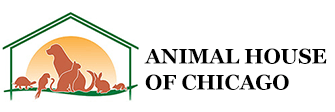Pet Dental Disease & Dental Home Care

Dental disease can affect our dogs and cats at any stage of life, but it is most common as our pets enter middle age. Studies at the Veterinary Colleges of Ohio State and Cornell University have found that 85% of dogs and cats over 6 years old have some form of dental disease.
Dental disease can be put into three categories: gingivitis, tartar, and pyorrhea. Gingivitis is inflammation of the gums. You can easily see this by the increase in the pinkness of your pet's gums, especially at the gum line. Tartar is the accumulation of plaque on the teeth, usually starting at the gumline in conjunction with gingivitis. Pyorrhea is the most serious of the three conditions. It is pus in the mouth, usually between teeth and gums.
All of these conditions are caused by one of two reasons:
- Feeding canned or soft pet foods. These foods give little to no benefits to the teeth and gums because they require little to no chewing.
- Genetics. As with our teeth, some people get cavities or excessive tartar due to genetics, while some animals have more dental problems than others due to genetics. Since we cannot change our genetics, dry food and hard biscuits are our recommendations.
So the next time you complain of dog breath or cat breath, look into your pet's mouth and then call us for an examination. Let's cure any problems and prevent more serious ones before they start.
One of the most overlooked aspects in preventive health maintenance is dental care. It is very important to the health of your pet. Dogs and cats do have problems with their teeth. Many of these problems are very slow in onset. Reluctance to eat, odor from the mouth, loss of energy, and reluctance to play are a few signs of possible dental disease.
Periodontal Disease
Periodontal disease is the most common cause of dental problems. Periodontal disease starts as an invisible glycoprotein layer on the tooth surface. Bacteria use this layer to attach to the tooth surface in a substance called plaque. Dead attached bacteria form calculus, which harbors additional bacteria. As these bacteria grow on the surface of the tooth they start to enter the gingival tissues. Bacteria produce toxins that injure the tissue.
As periodontal disease progresses, bacteria enter deeper into the soft tissue and destruction of the periodontium (supporting the tissues of the tooth) begins. The bone holding the tooth in place recedes as the inflammatory process progresses. Serious problems occur at this time, resulting in destruction of the periodontium, making the tooth loose and painful. The gingival infection results in a discharge of debris, organisms, and toxins into the bloodstream, possibly affecting the liver, heart, lungs, or kidneys.
Dental Home Care Advice for Pet Owners
Prevention and management of periodontal disease begins at home by training your pet to accept the cleaning of their teeth. Establish a routine of daily brushing your pet's teeth with a soft toothbrush. Use a circular motion with the emphasis of the stroke away from the gumline.
To get your pet used to tooth brushing, use a beef or chicken broth solution. CET Toothpaste can also be used, and there are several palatable flavors available. First coat the brush with the "yummy." Without restraint, allow the pet to lick the brush 3-5 times per day. Once the licking is established, try brushing the teeth, as the pet licks the brush. Gradually, as familiarity with the brush is established, you can start restraining and more vigorous brushing. If you can't brush your pets teeth at home, let us know, we will be happy to give you additional brushing instructions.
While not a complete substitute for brushing, some veterinary prescription diets have been proven to decrease the rate of calculus and plaque formation. Please discuss this with our staff or your veterinarian if you are interested in trying a dietary approach in the control of calculus and plaque build up.
Home oral hygiene is important to maintain your pet's dental health between professional cleanings. The frequency of professional cleanings will vary with your pet's individual needs.
